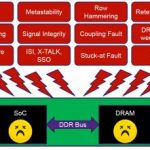The EDA tools industry relies upon ongoing productivity enhancements to existing products, to manage increasing SoC complexity and to address shrinking design schedules. The source of ideas for enhancements can come from a variety of sources – e.g., customer feedback, collaboration with the foundries, and features found … Read More
 A Six-Minute Journey to Secure Chip Design with CaspiaHardware-level chip security has become an important topic…Read More
A Six-Minute Journey to Secure Chip Design with CaspiaHardware-level chip security has become an important topic…Read More Lessons from the DeepChip Wars: What a Decade-old Debate Teaches Us About Tech EvolutionThe competitive landscape of hardware-assisted verification (HAV) has…Read More
Lessons from the DeepChip Wars: What a Decade-old Debate Teaches Us About Tech EvolutionThe competitive landscape of hardware-assisted verification (HAV) has…Read More Think Quantum Computing is Hype? Mastercard Begs to DisagreeJust got an opportunity to write a blog…Read More
Think Quantum Computing is Hype? Mastercard Begs to DisagreeJust got an opportunity to write a blog…Read More TSMC Kumamoto: Pioneering Japan's Semiconductor RevivalIn the lush landscapes of Kumamoto Prefecture, on…Read More
TSMC Kumamoto: Pioneering Japan's Semiconductor RevivalIn the lush landscapes of Kumamoto Prefecture, on…Read MoreRadio Integration – the Benefits of Built-In
It’s always a pleasure when a vendor gives a really informative, vendor-independent presentation on what’s happening in some domain of the industry and wraps up with (by that point) a well-deserved summary of that vendor’ solutions in that space. Ron Lowman did just that at the Linley conference on Mobile and Wearables, where … Read More
Smarter Cities and How They Can Serve Humanity
Communications technology is progressing at a phenomenal rate, especially when it comes to wireless communications and the ever growing Internet of Things. While many observers and media outlets focus on the benefits of devices and how they will impact consumers, producers, and service providers, there are also huge benefits… Read More
Why using new DDR4 allow designing incredibly more efficient Server/Storage applications?
The old one-size-fits-all approach doesn’t work anymore for DDR4 memory controller IP, especially when addressing the enterprise segments, or application like servers, storage and networking. For mobile or high end consumer segments, we can easily identify two key factors: price (memory amount or controller footprint) … Read More
Linley Mobile and Wearable Conference Drills into Rapidly Evolving Markets
Last week the Linley conference on mobile and wearables started with an overview and keynote address by the event’s namesake Linley Gwennap. His talk offered a few surprises and was informative all around. As you have seen recently reported here on SemiWiki, he sees smartphone shipments continuing to rise, but with a declining… Read More
One transistor for the future of mmWave?
We’ve heard recently from several sources that millimeter wave radios, once the exclusive realm of defense and satellite use, are now finding homes in applications such as automotive radar and 5G networks. Therein lies a significant opportunity for digital design: moving frequency conversion and filtering from the analog … Read More
At What Point Does Transistor Gate Length Stop Getting Smaller?
When I started doing IC design back in 1978 we had 6,000 nm channel gate lengths, and today you can buy a smart phone with 16 nm or 14 nm technology, although the gate lengths in those phones are more like 34 nm. The International Technology Roadmap for Semiconductors (ITRS) makes predictions about emerging trends in our industry and… Read More
A Credible Player at the Power Table
For a while it seemed like Mentor lived on the margins of the (RTL) design-for-power game. They had interesting micro-architectural optimization capabilities through their Calypto heritage but no real industry chops in power estimation, a must-have when you are claiming to reduce power. Better known offerings in RTL power … Read More
efabless: Think GitHub for ICs and IP
For those of you who don’t know, GitHub is the crowdsourcing version of the defacto industry standard GIT source code management software. Currently, more than 14 million people have deposited more than 35 million software projects (mostly open-source) on GitHub making it the largest host of source code in the world.
Now think… Read More
SEMICON West – Harry Levinson and Mike Lercel Interview
On Tuesday morning at SEMICON I had the opportunity to sit down with Harry Levinson, Sr. Director of Technology Research and Sr. Fellow at Global Foundries and Michael Lercel, Director of Strategic Marketing at ASML to discuss the state of lithography.
I opened the discussion with a question about how we are going to address lithography… Read More







AI RTL Generation versus AI RTL Verification